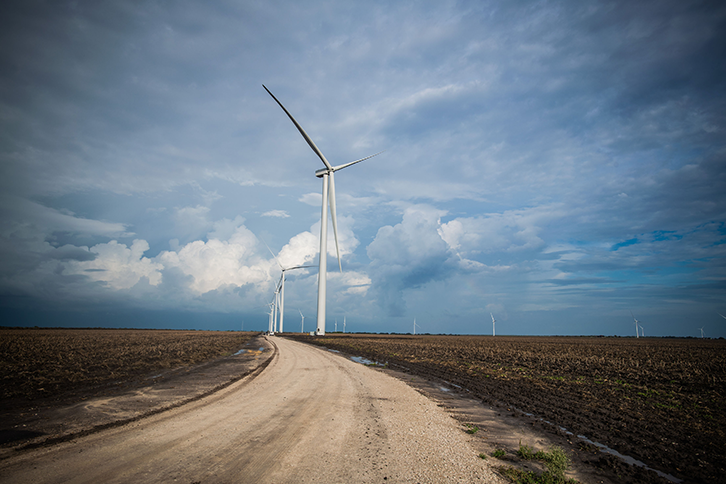News
-
07/09/2022Galán details to the Prime Minister of Australia the EUR 3 B investment in the country Iberdrola's Chairman, Ignacio Galán, has met with the country's Prime Minister, Anthony Albanese, and with Chris Bowen, Federal Minister for Climate Change and Energy, to detail the investment of up to 3 billion euros that the Spanish company intends to make in the country. Galán outlined the company's plans to supply new renewable energy capacity , battery storage, green hydrogen projects and investment in transmission grids. "The full ratification of Australia's decarbonization targets aligns federal policies with the ambitions already shown by most states, and the commitment shown by Australian businesses and society at large. The country's huge renewable potential and its clear and stable policy framework provide the best scenario for Australia to establish itself as a leading global power in the energy transition , maintaining its leadership as one of the world's largest energy exporters thanks to green hydrogen," said the chairman. Ignacio Galán emphasized that "Iberdrola is ready to invest and contribute its resources and skills to help drive the new jobs and economic opportunities that a greener, smarter energy system brings to Australia". "There is huge global demand from industry for new climate solutions such as green hydrogen, green ammonia and green steel. With abundant natural resources and the skilled energy workforce needed to develop these products on a large scale, as well as established energy trading partners, Australia can quickly lead the way in these new clean economy technologies," he said during his meeting. Iberdrola, leader in Australia Over the past three days, Iberdrola's chairman has held meetings and gatherings with various Australian authorities, both at state and federal level, as well as with employees of Iberdrola Australia. Iberdrola has made a strong commitment to the Australian energy market since 2020 with the acquisition of Infigen Energy, Australia's leading renewable energy company. The new investment figures double the 2 billion already invested by Iberdrola Australia in projects such as the Avonlie solar farm and Flyers Creek wind farm in New South Wales, and the Port Augusta renewable energy farm in South Australia, the largest wind-solar hybrid farm in the southern hemisphere. Similarly, in recent months Iberdrola has acquired the rights to the world's largest wind farm at Mount James, with 1,000 MW, the 360 MW Broadsound photovoltaic power station in Queensland and has invested in a smart solutions business, Autonomous Energy , which offers tailored energy products for commercial and industrial companies. Iberdrola has a mature portfolio of more than 2 GW of development projects and expects to reach 4 GW in the coming years, which will facilitate the consolidation of renewable energy as the main vector of the energy transition. Currently, the company has installed 1,062 MW of renewable energy (wind , solar and batteries). In addition, it is building two new facilities with a combined capacity of 391 MW, which are scheduled to come on line in 2023. Underlying all these investments is a commitment to place customers at the center of the energy transition by providing them with reliable, affordable and environmentally friendly energy. Industrial customers served by the company include some of Australia's most iconic brands, such as miner BHP and supermarket chain Woolworths. Earlier this year, Iberdrola set up its networks business in Australia, as the country's electricity grids, mainly transmission infrastructure, will need to be dramatically expanded to capture wind and solar resources and transport power to coastal population centers. Initiatives by the federal and state governments have created a climate of confidence for foreign investment to develop new renewable generation and transmission projects. In addition, it is analyzing a number of green hydrogen investments. Worldwide, Iberdrola is a leader in green hydrogen, with sixty projects underway in eight countries, including the recent completion of Europe's largest industrial green hydrogen plant in Spain. Australia, a growing market The electricity market in Australia is undergoing a profound transformation from a centralized generation system based on large fossil fuel facilities (coal and gas) to a system of distributed generation, primarily wind and solar power. The transition of the electricity system to cope with a higher proportion of renewable energy is the biggest challenge facing the country. This challenge in turn presents enormous opportunities to help companies manage their energy costs, as well as to capture new sources of growth. In addition to the huge pipeline of renewable energy and storage projects, there is strong residential demand for solar and battery technology.The main levers to ensure continued strong growth in renewable capacity are the upgrading of the transmission and distribution grid and reducing the cost of storage technologies. In addition, opportunities are emerging for the economy as the country embraces new sectors such as green hydrogen, ammonia and green materials, as well as opportunities for innovation in offshore wind and storage. READ MORE
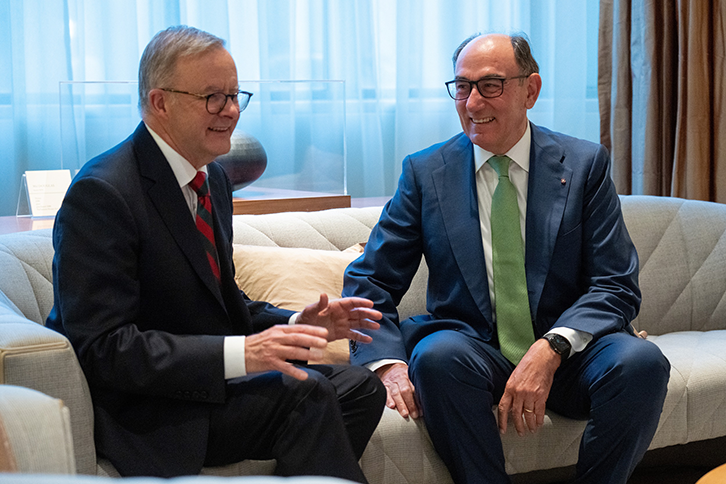
-
05/09/2022We are investing nearly €3 billion in Australia to lead the energy transition The Spanish company Iberdrola is taking another step forward in its international leadership in the energy transition to reduce dependence on fossil fuels. The company has committed to a major investment of between €2 and €3 billion in Australia with the aim of boosting the switch to renewables in the country and reaching 4,000 MW in the coming years. Iberdrola has already invested €2 billion in the country. This announcement was made during the trip of Ignacio Galán, the company's Chairman, which began today in Melbourne, where he will hold meetings with key energy policy leaders and visit several of the renewable projects that the company is carrying out in the region. "With these investments, Australia is consolidating its position as one of Iberdrola's key markets. The country's abundant wind and solar resources, as well as the pace of technological development, place this region in a privileged position. We will lead and accelerate its transition to an economy with green energy at its epicentre, with the aim of increasing the amount of electricity generated with renewables, which now represents around a third of its generation", said Ignacio Galán. As part of this visit, this morning Iberdrola's Chairman, Ignacio Galán, met with the Premier of the State of Victoria, Daniel Andrews, and the Minister for Energy, Environment, Climate Action and Solar Housing, Lilly D'Ambrosio, and in the afternoon (Australian time) he met with employees of the Melbourne office. Australia, a growing market The electricity market in Australia is undergoing a profound transformation from a centralised generation system based on large fossil fuel facilities (coal and gas) to a system of distributed generation, primarily wind and solar power. The transition of the electricity system to cope with a higher share of renewables is the biggest challenge facing the country. This challenge in turn presents enormous opportunities to help companies manage their energy costs, as well as to capture new sources of growth. In addition to the huge pipeline of renewable energy and storage projects, there is strong residential demand for solar and battery technology. The main levers to ensure continued strong growth in renewable capacity are the upgrading of the transmission and distribution grid and reducing the cost of storage technologies. In addition, opportunities are emerging for the economy as the country embraces new sectors such as green hydrogen, ammonia and green materials, as well as opportunities for innovation in offshore wind and storage. Iberdrola, leader in Australia Iberdrola has made a strong commitment to the Australian energy market since 2020 with the acquisition of Infigen Energy, Australia's leading renewable energy company. In addition to this major acquisition, the company has committed more than A$1 billion (around €700 million) to new renewable growth projects, such as the Avonlie solar farm in south-west New South Wales, the Flyers Creek wind farm in central New South Wales and the Port Augusta renewable energy complex in South Australia, the largest hybrid wind-solar farm in the southern hemisphere. Similarly, in recent months Iberdrola has acquired the rights to the world's largest wind farm at Mount James, with 1,000 MW, the 360 MW Broadsound photovoltaic plant in Queensland and has invested in a smart solutions business, Autonomous Energy , which offers bespoke energy products for commercial and industrial companies. With these investments, Iberdrola has a mature portfolio of more than 2 GW of development projects that will facilitate the consolidation of renewable energies as the main vector of the energy transition. The company has currently installed 1,062 MW of renewables (wind, solar and batteries). In addition, it is building two new facilities with a combined capacity of 391 MW, which are scheduled for commissioning in 2023. Underlying all these investments is a commitment to put customers at the heart of the energy transition, providing them with reliable, affordable and environmentally friendly energy. Industrial customers served by the company include some of Australia's most iconic brands, such as mining company BHP and supermarket chain Woolworths. Earlier this year, Iberdrola set up its networks business in Australia, as the country's electricity grids, mainly transmission infrastructure, will need to be dramatically expanded to capture wind and solar resources and transport power to coastal population centres. Initiatives by the federal and state governments have created a climate of confidence for foreign investment to develop new renewable generation and transmission projects. READ MORE

-
31/08/2022Andromeda technology fund bets on augmented reality in its second investment in companies Andromeda continues its roadmap in search and capture of investments with ESG (environmental, sustainability and governance) attributes. Invested by Iberdrola, the ICO Next Tech Fund, Nortia Capital and Seaya, this investment vehicle has entered the capital of Seabery, a leading Spanish company in Augmented Reality applied to the training of industrial talent. It is its second investment, after landing in the company 011h, focused on the design and construction of carbon neutral buildings. The company, founded by Basilio Marquínez, started its activity in 2010, when it patented Soldamatic, the first welding training solution with Augmented Reality simulation that allows future welders to acquire the necessary skills before certification and avoids unnecessary consumption of resources such as energy, gases or metal. The reduction is more than 70% in materials used during training and in pollutant emissions and waste, while cutting training time by 50%. The company's hallmark is to become a benchmark in the EdTech and industrial sector of skills-based learning, helping to evolve the traditional educational model and enabling companies to adapt to the requirements of Industry 4.0. Soldamatic is marketed in more than 80 countries on five continents, with the United States and Germany as major markets, and is being implemented in leading industrial companies such as Siemens, Mercedes Benz, Audi, Volkswagen, John Deere and Alstom. With the entry as minority partners of Andromeda and the Spain Oman Private Equity Fund (SOPEF) - created in 2018 with the aim of supporting Spanish companies to develop their internationalisation plans and led by the private equity firm MCH Private Equity - Seabery plans to boost its international expansion in the Asia-Pacific region, increase the penetration and commercialisation of its technology to industrial companies and continue developing its technology with the aim of opening new lines of business, such as training in industrial painting. The company, based in Spain, has more than 100 employees around the world and is targeting young people. It aims to attract them and increase the number of qualified professionals demanded by industry worldwide with a method that in the last 10 years has saved the equivalent of the material needed to build the Golden Gate Bridge in San Francisco (United States). Its implementation in training centres has also led to a drastic reduction in the number of workplace accidents. Andromeda, the first large technology fund in Spain Andromeda is the first large technology venture capital fund to have concrete sustainability objectives in line with Article 9 of the EU Regulation, with clear and measurable environmental, sustainability and governance (ESG) criteria. The fund, which aims to have a size of €300 million, is born with public participation of up to €100 million through the Next Tech Fund. This project is part of the Government's Recovery, Transformation and Resilience Plan, which promotes public-private collaboration in innovative digital projects in high-impact technologies and the development of scale-ups that generate quality employment. The role of innovation with PERSEO With its participation in Andromeda, Iberdrola took a further step towards entrepreneurship and technological leadership through its PERSEO start-up programme , which aims to facilitate the group's access to the technologies of the future and foster the collaboration and development of a global ecosystem of technological and innovative companies in the electricity sector . The programme has focused its activities on the analysis of business opportunities and technological collaboration with start-ups and emerging companies around the world, analysing 900 companies each year and creating an ecosystem of almost 7,500 entrepreneurial companies from more than 35 countries. Since its creation, the programme has invested €100 million in supporting open innovation and creating synergies with start-ups developing innovative technologies and business models. READ MORE
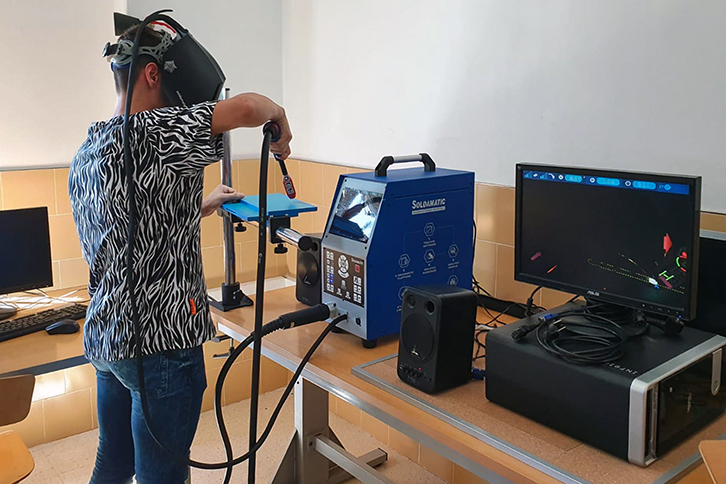
-
30/08/2022Iberdrola reforests with more than 270,000 trees the towns in Spain that are most committed to sustainability Four municipalities have won the project Bosque busca pueblo en el que crecer launched by Iberdrola. Muelas del Pan, San Cebrián de Castro (both in Zamora), Cerdedo-Cotobade (Pontevedra) and Liérganes (Cantabria) are the winners and the electricity company will be responsible for promoting the recovery of natural areas through the conversion of burnt or wasteland into forests, the development of employment and the development of the region. Iberdrola will plant seedlings, drones and smart seeds through its international startup program, Perseo, together with CO2 Revolution , a company specialized in measuring the carbon footprint and helping to offset it through reforestation projects. The winning municipalities will have Iberdrola as an ally, which will plant more than 270,000 trees of native species and ensure the creation of entire ecosystems that promote biodiversity; shrubs, aromatic and flowering plants of all strata of the vegetation layer will also be planted. Iberdrola's objective with these actions is to recover land degraded by fires or unsustainable uses, reduce erosion, improve the landscape and recover biological and forestry activity with the introduction of various species. The electricity company will bear the costs and thus promote the reforestation of municipal public land, promote the generation of local employment, and increase the natural capital of the municipality. Iberdrola will work with the municipalities to define the scope and viability of the reforestations to be carried out in each of them. Thanks to these projects, more than 175,000 tons of CO2 will be absorbed over the next 35 years. Commitment with the emptied Spain The project is part of the Iberdrola - PERSEO international start-up program , which is supported by the European Commission and its strategic plan 'A long-term vision for EU's rural areas', through the REInA platform (European Rural Innovation Area). This platform, promoted by the University of Salamanca and managed by the start-up Olé, aims to attract investment, create jobs and generate projects in rural areas that ensure a better quality of life and services for the inhabitants of these areas. Muelas del Pan, San Cebrián de Castro, Cerdedo-Cotobade and Liérganes will also be able to implement other sustainable initiatives by Iberdrola with Smart solutions. From the towns, the public representatives have been enthusiastic about their choice and willing to implement the projects, foreseeably from September. The selection has taken into account the strategy and planning in sustainability, entrepreneurship and innovation, with special attention to the promotion of renewable energies, the electrification of demand and the decarbonization of its economic activity. With this initiative, Iberdrola contributes to the creation of new opportunities in rural areas and to promote the offsetting of CO2 emissions. The project will allow the recovery of natural spaces and their revitalization, since the development of various forest environments will promote their recreational and tourist use and will contribute to the fight against depopulation by generating local employment. Planting 20 million trees As part of Iberdrola's commitment to the environment, the company has set itself the target of promoting the planting of 20 million trees during this decade, which will capture approximately 6 million tons of CO2 in 30 years. This CO2 absorption would neutralize the emissions of a car driving 116 times around the Earth. Thanks to the technology, developed by CO2 Revolution, it is possible to repopulate large areas of land with high efficiency and respect for the environment. It combines state-of-the-art forestry biotechnology with robotics and the improvement of mechanized land-based methods used in the sector. To date, 2,500 hectares of land have already been reforested with this system, equivalent to avoiding the emission of 500,000 tons of CO2 into the atmosphere. In addition, the company is committed to the rural world as a fundamental lever for activity and economic recovery throughout the country. In the last two years, Iberdrola has promoted the installation of twenty new wind and solar facilities in rural areas of eleven autonomous communities, with a combined capacity of 2,000 MW. READ MORE
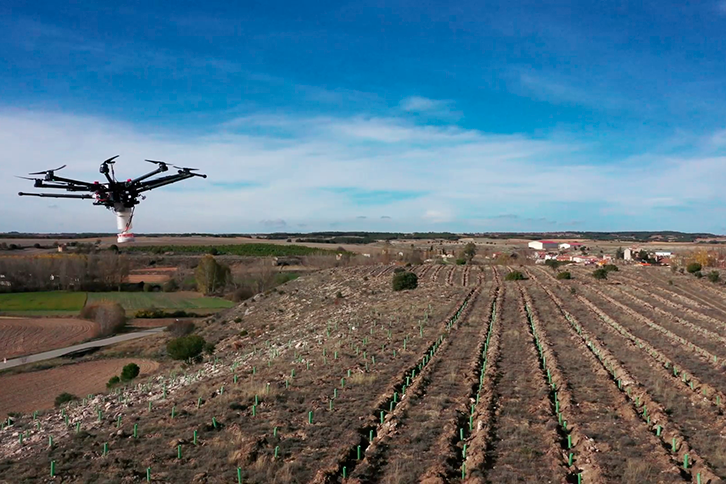
-
25/08/2022Iberdrola to commission 1,400 new MW of solar power in Spain Iberdrola is consolidating its position as the leading promoter of photovoltaic solar energy , one of the most efficient technologies in the fight against climate change. The company's commitment to the development of this renewable source will allow it to add 1,400 new solar megawatts (MW) in Spain in the coming months. The company is currently executing 12 photovoltaic projects, with a combined installed capacity of 550 MW, half of them located in Extremadura , where Iberdrola is building the Almaraz I and II plants (80 MW), which will be connected to the grid this year, and the Tagus complex in Alcántara, comprising four plants with a total capacity of 200 MW. The company is also building six other facilities in Castilla y León and Andalusia using this technology, totalling 271 MW. These are the Villarino plant (50 MW) in Salamanca; the Guillena project (144 MW) in Seville; Cespedera (27 MW) in Cadiz; and Virgen de Aremos III (50 MW) in Palencia. In addition, Iberdrola plans to start construction this year on another six projects that will provide 873 MW of new solar power in four autonomous communities: Ciudad Rodrigo (318 MW) in Salamanca; Fuentes (50 MW), Valbuena (50 MW) and Manantiales (30 MW) in Guadalajara; Peñarrubia (50 MW) in Murcia; and Cedillo (375 MW) in Cáceres. 125% more solar production until June Iberdrola ended the first half of the year with more than 2,200 MW of photovoltaic power installed in Spain, 800 MW more than the same period last year, representing an increase of more than 55% in the period. The new capacity has allowed the company to increase its solar production in the country by 125% up to June, to 1,067 GWh. An amount that would have required some 184 million cubic metres of gas to be generated by a combined cycle. Spain's drive has enabled the group to increase its global installed capacity in this technology by 56% - which has reached 3,448 MW - and to reach a total production of 1 .870 GWh (the same amount of energy as that generated by more than 320 million cubic metres of gas). These figures confirm the company's firm commitment to this renewable, inexhaustible and non-polluting energy source, capable of adapting to natural cycles and weather conditions, which offers the advantage of allowing production through both commercial-scale plants and small self-consumption facilities. Among the projects commissioned so far this year is the Francisco Pizarro project which, with 590 MW of power, is the largest photovoltaic plant in Europe and the Iberdrola group's largest plant of this type in the world. Made up of 1.5 million photovoltaic modules, it will generate enough clean energy to supply more than 334,000 homes and prevent the emission of 140,000 tonnes of CO2 into the atmosphere per year. Mention should also be made of the Romeral and Olmedilla plants in Cuenca, each with 50 MW, which will produce clean energy for a population equivalent to more than 24,500 households/year, and close to 30,000 households/year, respectively. In addition to these plants, Iberdrola will start production with 100 MW of photovoltaic power at Puertollano , in Ciudad Real, where Iberdrola has the largest green hydrogen plant for industrial use in Europe, and the Revilla-Vallejera plant in Burgos, the first photovoltaic project promoted and developed by the company in Castilla y León, with 50 MW of power. The Iberdrola group began its commitment to renewable energies more than two decades ago as a fundamental pillar on which to build its clean, reliable and intelligent business model. Thanks to this vision, the company is today a world leader in renewable energies, with 38,000 MW of renewable capacity installed worldwide - 19,370 MW in Spain - at the end of the first half of 2022, and is a leader in the energy transition towards a low-emission economy. This commitment is reflected in its investment plan, which aims to double its renewable capacity to 60,000 MW by 2025, rising to 95,000 MW by 2030. This solid growth is confirmed by the more than 10,800 MW of renewable capacity under construction at the end of the first half of 2022. READ MORE
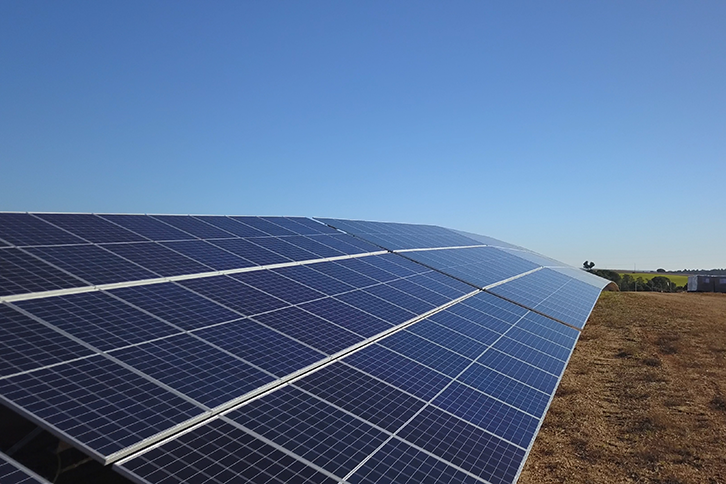
-
24/08/2022Iberdrola starts commissioning 100 new MW of solar power in Extremadura Iberdrola has started to commission two new photovoltaic plants in Extremadura. These facilities, called Majada Alta and San Antonio, are located in the Cáceres town of Cedillo and have a combined capacity of 100 megawatts (MW), enough to supply clean energy to 45,000 households, more than the population of a town like Plasencia. Together, these installations consist of around 250,000 solar panels that will produce 156,000 MWh of electricity per year. An amount that would have required more than 26 million cubic metres of gas to be generated by a combined cycle. The plants will avoid the emission into the atmosphere of 28,000 tonnes of CO2 per year. Their construction has led to the creation of more than 300 local jobs. With their commissioning, Iberdrola now operates twenty renewable energy facilities in Extremadura, where it currently has 3,867 MW of installed green power, 47% of which corresponds to the 12 solar plants that the company has in operation in the region. The construction of this project has been a major technological and logistical challenge to ensure the minimum environmental impact on the surroundings of the Tagus International Natural Park, a protected area between Spain and Portugal. The company has undertaken a complex solution to jointly evacuate the energy produced by these photovoltaic plants and the almost 500 MW hydroelectric plant also located in the municipality. To avoid using large areas of land, the company has installed an encapsulated substation of only 300 m2, compared to the 10,000 m2 of land usually required for infrastructures of this type. Manufactured in Italy, it had to be transported by ship from Venice to Seville along the waters of the Guadalquivir and, from there, it travelled through Andalusia and Extremadura in large lorries. The substation was inserted in containers placed on a six-metre-deep structure, through which all the cables that distribute the power to the grid are connected. Each of these containers weighs more than 50 tonnes and large overhead cranes were needed to position them without interfering with the four evacuation lines of the hydroelectric power plant. This innovative infrastructure will also serve a third 375 MW photovoltaic plant, which will avoid the installation of new evacuation networks, promoting environmental protection and integration into the territory. This facility - backed by the town council and the Cedillo Agrarian Society - is currently being processed by the Ministry for Ecological Transition and the Demographic Challenge. The plant will be located on a communal farm owned by a large part of the residents of Cedillo, who will be able to continue their livestock farming activities. Coexistence with the rural environment and heritage During the construction of these two new photovoltaic plants, Iberdrola has demonstrated its commitment to the environment and its respect for historical and cultural heritage, after locating important archaeological finds in the vicinity of the project during the preliminary land clearing work. Specifically, a dolmen was discovered, which is between 3,500 and 4,000 years old, and a pre-Romanesque necropolis from the 5th century with 32 tombs, which has been made available to the Junta de Extremadura after the cataloguing and documentation work. Iberdrola also discovered a funerary stele that has been transferred to the Provincial Museum of Cáceres. The company is working with the authorities on the possibility of turning these findings into a point of tourist interest. As part of Iberdrola's commitment to contribute to the development of this town, the company plans to install the first solar community in Spain for an entire village in Cedillo. Thanks to this initiative, all the inhabitants of the municipality will enjoy a 50% saving on their electricity bills. Iberdrola will assume the total investment for the assembly and management of this collective self-consumption system, which will be put into operation at the beginning of 2023. 10,000 new MW in Spain by 2030 Extremadura is one of Europe's richest regions in terms of natural resources and a key location for the development of solar energy . The region has become the spearhead of Iberdrola's commitment to boosting renewables in Spain. The company's investment plan foresees the installation of 10,000 new MW in the country by 2030. A development in which the Extremadura region is playing a key role. In the 2020-2025 period alone, Iberdrola will have installed more than 2,800 MW of renewable energy in Extremadura, with an investment of more than 1,700 million euros and the creation of some 7,400 jobs over the five-year period. The Iberdrola group began its commitment to renewable energies more than two decades ago as a fundamental pillar on which to build its clean, reliable and intelligent business model. Thanks to this vision, the company is today a world leader in renewable energies, with 38,000 MW of renewable capacity installed worldwide - 19,370 MW in Spain - at the end of the first half of 2022, and is a leader in the energy transition towards a low-emission economy. READ MORE
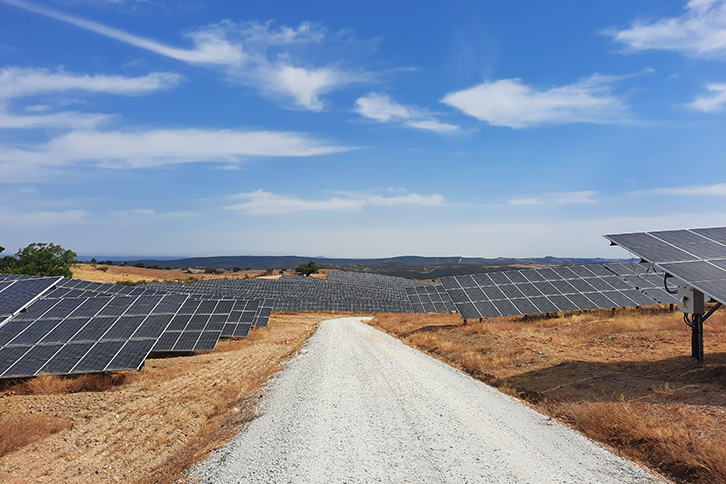
-
23/08/2022El programa de start-ups de Iberdrola cumple 15 años con una inversión de 175 millones Iberdrola cumple 15 años de innovación en el sector energético de la mano de su programa de start-ups, PERSEO . Este ha contribuido a que la eléctrica ponga en marcha soluciones innovadoras para potenciar las energías renovables, la descarbonización y la electrificación de la economía, la digitalización de las redes, el fomento del almacenamiento eficiente y el cuidado del medio ambiente. La iniciativa, con nueve empresas actualmente en cartera, ha creado en estos años un ecosistema global de empresas emergentes con una inversión de 175 millones de euros. PERSEO se fundó con el objetivo de identificar tendencias clave para el futuro de Iberdrola, proporcionar el acceso a tecnologías y modelos de negocio disruptivos, fomentar una cultura innovadora y apoyar a sectores industriales con alto potencial de crecimiento. Su impulsor fue José Sainz Armada, director de Finanzas, Control y Desarrollo Corporativo (CFO) del grupo Iberdrola. Su objetivo fue proporcionar un paraguas común para las aportaciones innovadoras que llegaban a la eléctrica. De los 175 millones, la plataforma destina 135 millones de euros a invertir en empresas emergentes y otros 40 millones para crear y desarrollar negocios con alta componente industrial que den soporte a la electrificación, la descarbonización y la sostenibilidad del sector energético. Uno de los grandes objetivos del programa, liderado por Diego Díaz Pilas, es atender a las demandas de los clientes para que estos cuenten con productos distintos a los habituales. PERSEO analiza más de 900 empresas cada año que proponen nuevas formas de hacer en el sector energético. Gracias a su modelo abierto y colaborativo, y a la promoción de retos dirigidos a las empresas en desarrollo para innovar en el sector energético –más de 10 al año–, PERSEO ha ejecutado más de 25 proyectos piloto cada ejercicio En el ecosistema del programa se hallan más de 7.500 start-ups, entre ellas unicornios –empresas valoradas en más de 1.000 millones de dólares–, como el fabricante de soluciones de recarga para vehículos eléctricos Wallbox y Stem, que ofrece soluciones de almacenamiento inteligente en baterías. Los proyectos piloto permiten a las start-ups acceder a grandes volúmenes de datos y activos energéticos reales, gracias a que prueban sus tecnologías en un entorno real y, al mismo tiempo, ofrece inversión a las start-ups con mayor potencial de crecimiento. Estas dos fórmulas permiten conocer el mercado y acceder a tecnologías clave de primera mano. La primera inversión de PERSEO se cerró en 2009, en 2013 desembarcó en una compañía de Silicon Valley, en 2016 se creó el programa de retos y programas piloto, y en 2020 lanzó Perseo Venture Builder para crear desde cero negocios de soporte a la electrificación y la sostenibilidad del sector energético. Se concentra en áreas como el reciclaje y la economía circular y en sectores de difícil descarbonización, como la producción de calor industrial y el transporte pesado. PERSEO es uno de los motores de Iberdrola en innovación, y se complementa con otras iniciativas que llevaron a la compañía a invertir 337,5 millones de euros solo el año pasado. En total, el grupo ha destinado más de 2.000 millones de euros a la innovación, la investigación y el desarrollo en los últimos 10 años y se ha convertido en la utility privada que más invierte en innovación de todo el mundo. Agustín Delgado Martín, director de Innovación de Iberdrola, explica que PERSEO “está concebida como una herramienta más para ayudarnos a entender el futuro del sector energético.” “En Iberdrola siempre hemos tenido proyectos de I+D+i [investigación, desarrollo e innovación], normalmente exitosos, pero que estaban muy centrados en lo que nosotros ya sabíamos hacer. Con PERSEO, lo que intentamos hacer es entender las dinámicas de estas nuevas compañías que ayudan a entender nuevos modelos de negocio, cómo se integran nuevas tecnologías en nuestro sector”, añade. El hito de Andromeda El último gran hito de la historia de PERSEO data del pasado mayo, cuando entró en Andromeda , el primer gran fondo tecnológico de venture capital con objetivos concretos en sostenibilidad en línea con el artículo 9 del Reglamento de la Unión Europea, contando con claros y medibles criterios ambientales, de sostenibilidad y gobernanza (ESG por sus siglas en inglés). El fondo, que aspira a tener un tamaño de 300 millones de euros, ha nacido, además de con Iberdrola, con la participación pública a través del Fondo ICO Next Tech, con la de Nortia Capital y con la Seaya Ventures, que se encarga de su gestión. El proyecto de Andromeda se enmarca en el impulso de la colaboración público-privada en proyectos digitales innovadores de tecnologías de alto impacto y el desarrollo de start-ups que generan empleo de calidad, que contempla el Plan de Recuperación, Transformación y Resiliencia del Gobierno. READ MORE
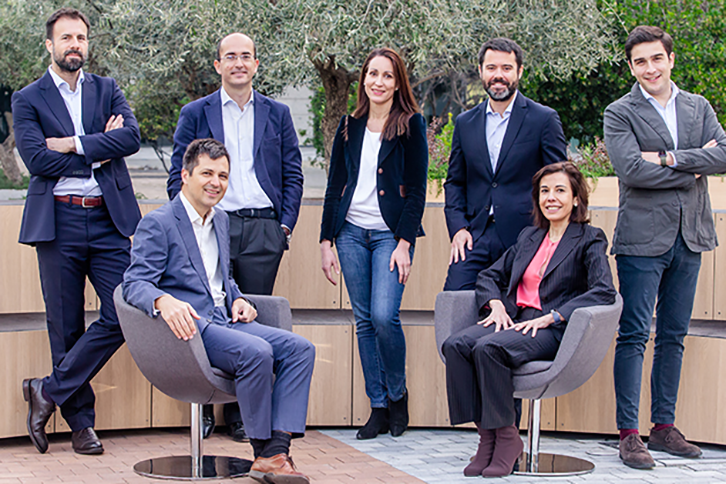
-
22/08/2022Iberdrola United States once again included in the FTSE4Good sustainability index The market once again recognises the strong environmental, social and corporate governance (ESG) criteria of Avangrid , Iberdrola's US subsidiary. This is the fifth year that the NYSE-listed company has been selected for the FTSE4Good index. The index is designed to measure the performance of companies that demonstrate strong ESG practices . Avangrid is ranked ahead of its comparable utilities that are assessed by the index's creator, FTSE Russell. The FTSE4Good indices are used by a wide range of market participants to create and rate responsible investment funds and other financial products. The assessments of FTSE Russell, the index creator, are based on performance in areas such as corporate governance, health, safety, anti-corruption and climate change. As such, companies included in the FTSE4Good index series meet a range of environmental, social and governance criteria. In its most recent assessment, Avangrid ranked in the top quartile of its peers in the FTSE Russell utilities subsector for ESG rating and scored highest for governance, which includes assessment of risk management, corporate governance and anti-corruption. In addition, Iberdrola's US subsidiary scored more than 60% higher than its US peers for labour standards, human rights and community, pollution and resources. A forward-looking strategy Avangrid has a forward-looking ESG strategy that focuses on managing the environment, society and its own governance and financial strength (ESG+F). This approach inspires the company's business decisions, helps promote its sustainability commitments and creates long-term sustainable value for its shareholders. Avangrid's sustainability strategy is built around five key areas: reducing the company's carbon footprint ; acting consciously on social investment; creating a more sustainable and diverse supply chain; investing in its people; and operating to the highest ethical and governance standards. In addition to being included in the FTSE4Good index series, Avangrid has won numerous accolades for its ESG efforts, including being named among the world's most sustainable companies by S&P Global for two consecutive years, being recognised by JUST Capital in 2021 and 2022 as one of the JUST 100 companies, and being named among the world's most ethical companies for four consecutive years. History in the United States Iberdrola's history in the United States is a success story. In less than two decades, the company chaired by Ignacio Galán has become one of the largest groups in the North American electricity sector, listed on the US stock exchange since 2015 with a capitalisation of around $20 billion. Iberdrola's US subsidiary, which aims to lead sustainable energy in the United States, is present in 25 states and manages more than 9,200 megawatts (MW) of generation capacity, of which more than 8,300 MW of renewables (mainly wind and solar photovoltaic), and more than 170,000 kilometres of power lines through eight distributors in New York, Connecticut, Maine and Massachusetts. In addition, the Spanish company has a portfolio of high-quality renewable projects in the United States of more than 22,000 MW, which represent a stable platform for continued growth over the next few years as the country meets its decarbonisation targets. READ MORE
